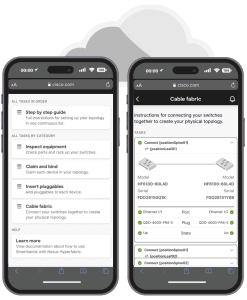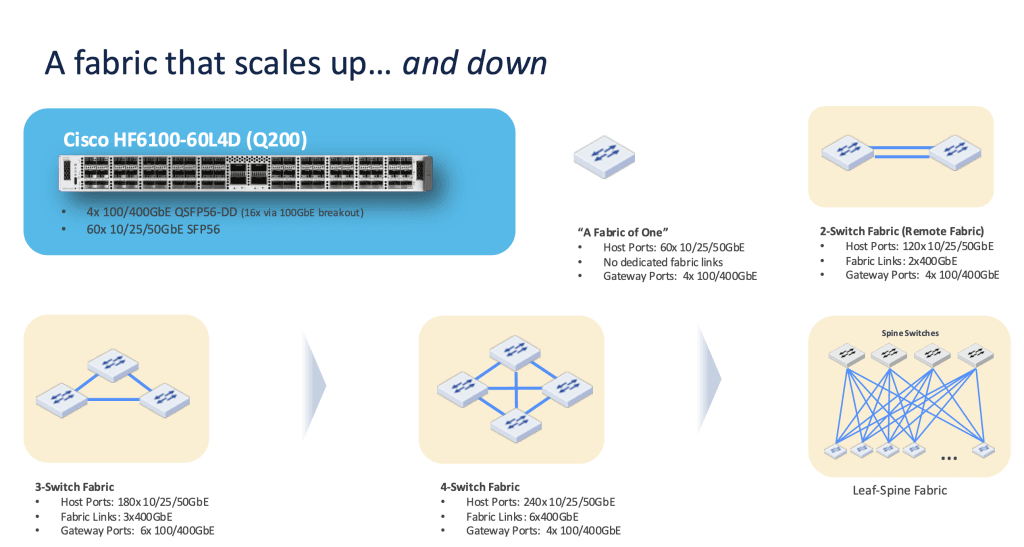It has been a while since I blogged on new technology. Tech Field Day eXtra at CiscoLive EMEA 2025 is a great opportunity to learn new tech in the infamous firehose-way and with some digestion write about it. And one of those innovations is Cisco’s all-new HyperFabric.
Cisco built HyperFabric in about two years. What they did is something I find we don’t do often enough in IT. They took a blank piece of paper and determined what are the actual modern requirements of a data center network (fabric) and why this frequently fails in implementation.
One of the main challenges of today’s fabrics, and I see this frequently, is that due to the complex configuration required for datacenter fabrics, most of them tend to become unique and not repeatable and thus scalable. And that is something that Cisco’s Hyperfabric has solved.
From design to build
All networks start with a design, Cisco’s Hyperfabric too. You log in to a website with your credentials and start setting up your design and sizing requirements. Define the network topology, such spine-leaf or full-mesh, and what type of servers you will connect to the fabric. Once you are satisfied with the design, a kitlist (bill of materials) can be exported and shared with your Cisco partner for discount and ordering. The UI seems simple and clean, which helps in getting these fabrics up & running. But that is not all, it’s not only a design tool, it’s also the fabric controller. So your design was already validated before ordering. The controller now “knows” which SFP goes into which port and for which configuration. No need to write an implementation plan anymore.
Validation during build

The next stage is to build the fabric, and that is made easy too. HyperFabric has built a small App (actually a mobile website) that your field engineer can use to determine which SFP and cable go into which port on which switch. The great thing is since the app is talking to the controller, the field engineer immediately gets feedback if the right SFP/Cable/port has been used. That will save quite a bit of troubleshooting a fabric before deployment. I am genuinely impressed.
Software-defined all the way gives flexibility
For the nerds and IPv6 geeks under us, the fabric itself was designed and built from a blank paper too. That means clean API-first definitions and the underlay uses IPv6 link-local addressing for its communication. No need for any IP space reservations for an underlay. Using link-local addresses also allows for flexibility in your fabric design. It is possible, during production, to change from a mesh topology to a spine-leaf construct. It also allows you to deploy all sorts of topologies and protocols in the overlay without any coding; just create that L2 network or IPv6-only network you always wanted to try.

Drawbacks
Even though I am impressed, and I see a lot of use cases, I also have some (small) drawbacks I need to mention. One is that Hyperfabric only works with the Nexus 6000 series and that switch does not run NX-OS, it runs an embedded operating system based on Sonic. For new greenfield environments, this is a good thing. But.. If you’ve already invested in Nexus Classic (with Nexus Dashboard) or Cisco’s ACI, you are creating a completely new environment besides it. I kind of get that decision, but it still feels “odd” to have another OS introduced (whereas most OS’es within Cisco have been converging).
Another drawback I see is, that it is cloud-based. With all the things happening in the world, and the need for more sovereignty on infrastructures, I think that is a missed opportunity. I think I heard it is based on Intersight, and Intersight can be run locally, so that would be great for all these on-prem (darknet) data center fabrics we need to build for AI workloads.
Summary
Getting a completely new design to production in two years is really fast. I am impressed with Cisco Hyperfabric. And to me, it does fit the gap that Cisco Meraki currently has in its portfolio; the datacenter world. To me, Cisco Hyperfabric is the Meraki approach and definition for the datacenter. And that mix of Cisco Hyperfabric and Cisco Meraki is great for a large set of customers. Can’t wait to see the validated designs for data/ai workloads based on Hyperfabric with NetApp or PureStorage coming out.


One Response